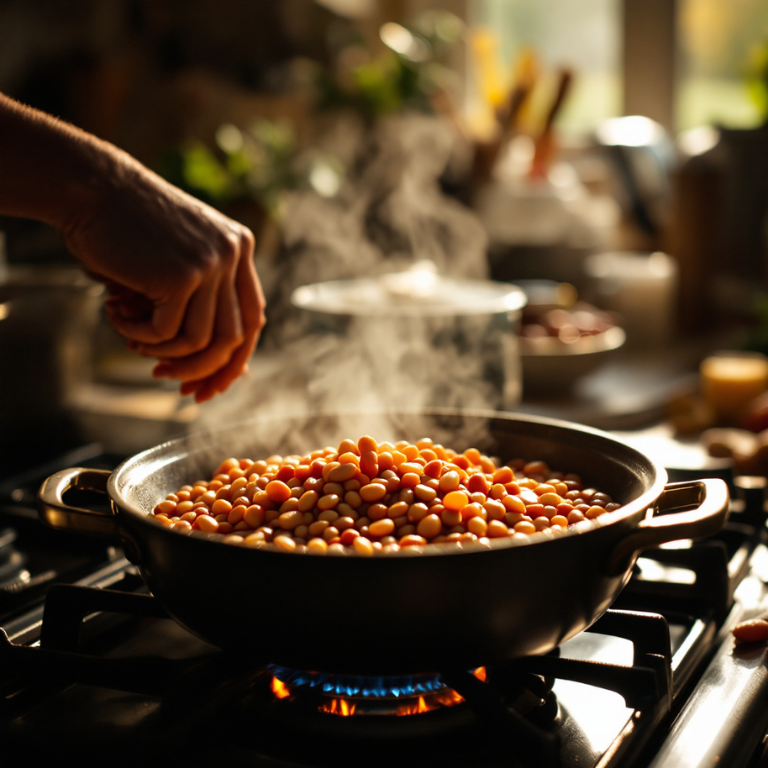Quick Guide to Cooking Beans for Blood Sugar Management
| Key Benefit | Details |
|---|---|
| Blood Sugar Impact | Low glycemic index, slow carbohydrate absorption |
| Recommended Portion | 1/3 cup cooked beans = 1 starch exchange |
| Best Types | Black beans, kidney beans, pinto beans |
| Cooking Methods | Soaking, steaming, pressure cooking |
Beans stand out as a diabetes superfood that helps manage blood sugar levels while providing essential nutrients. The American Diabetes Associationrecommends beans as part of a diabetes-friendly diet because they’re packed with dietary fiber and plant-based protein. This guide will show you how to prepare beans that taste great while helping you maintain healthy blood sugar levels.

The Power of Beans for Blood Sugar Control
Beans excel as a nutrient-dense food that supports effective diabetes management. They contain high amounts of micronutrients including:
- Potassium for heart health
- Magnesium for insulin function
- Folate for cell growth
- Iron for oxygen transport
- Zinc for immune support
Their low glycemic index means they won’t cause rapid spikes in blood sugar. Instead, beans promote blood sugar stabilization through slow digestion and steady carbohydrate absorption.
Looking for other protein-rich options? Check out our guide on “Are Protein Bars Good for Diabetics” for more diabetes management choices.
Choosing the Right Beans
When selecting beans for a diabetes-friendly diet, consider these options:
- Black beans: High in antioxidants
- Kidney beans: Rich in fiber
- Pinto beans: Excellent source of protein
- Navy beans: Good for heart healthy meals
Compare dried beans versus canned beans:
Dried Beans:
- More affordable
- No added sodium
- Require overnight soak
- Better texture control
Canned Beans:
- Convenient
- Ready to use
- Look for low sodium options
- Rinse well to reduce sodium
Cooking Methods That Preserve Nutrients
Different healthy cooking methods affect how beans impact your blood sugar:
- Pressure Cooking
- Fastest method
- Maintains nutrients
- Reduces cooking time by 70%
- Steaming
- Preserves nutrients
- Gentle cooking process
- Great for tender beans
- Sautéing
- Adds flavor
- Use minimal oil
- Good for reheating
Diabetes-Friendly Bean Recipes
Try these affordable meals that support blood glucose response:
Basic Bean Bowl
- 1/3 cup cooked beans
- 1/2 cup brown rice
- Mixed vegetables
- Herbs for natural flavors
Mediterranean Bean Salad
- Mixed beans
- Olive oil
- Fresh vegetables
- Herbs and spices
Remember portion control: stick to 1/3 cup of cooked beans per serving to manage carbohydrate intake effectively.
Expert Tips for Bean Preparation
Healthcare professionals recommend these practices for optimal diabetes management:
- Soak dried beans overnight to:
- Reduce cooking time
- Improve digestibility
- Lower gas-causing compounds
- Add flavor without sugar:
- Use herbs and spices
- Avoid high-sugar ingredients
- Include garlic and onions
Embracing Beans for Better Health
Learning how to cook beans for diabetics opens up a world of nutrient-rich foodsthat support your health goals. Whether you choose dried beans or canned beans, proper preparation helps you maintain stable blood sugar while enjoying delicious meals.
Remember to start with small portions and monitor your blood sugar response to find what works best for you. With these cooking methods and tips, you can make beans a healthy, satisfying part of your diabetes management plan.
